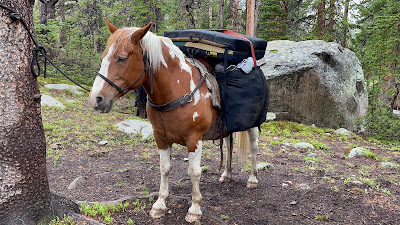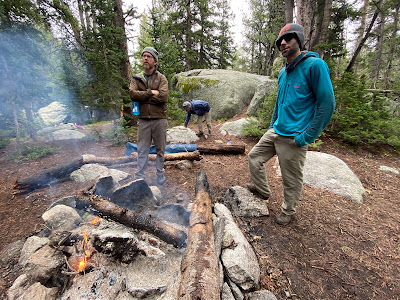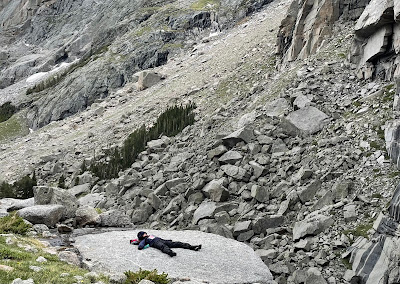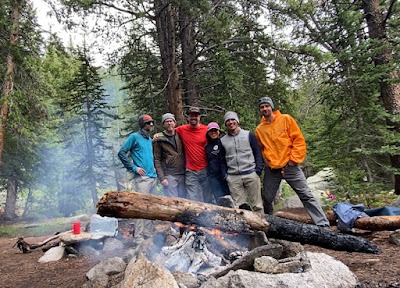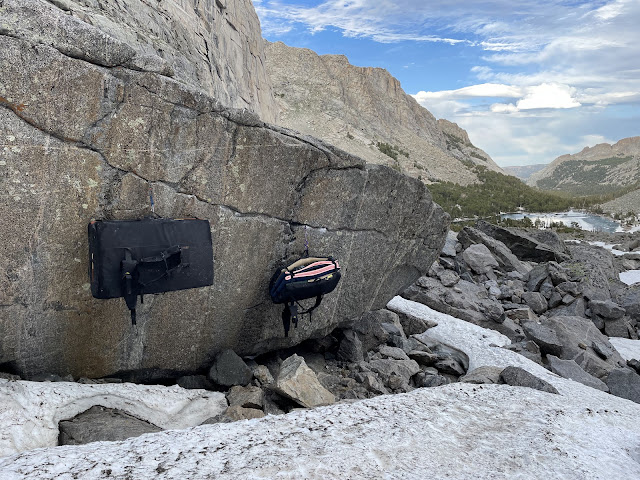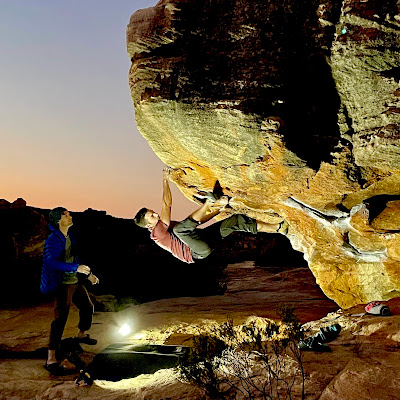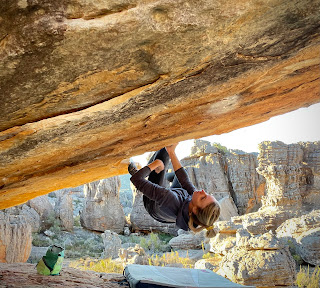John Oungst, KAYA's Director of Partnerships for corporation Project 9a, didn't catch me at the best time. Back in February of 2023 I was living out of my truck near Tucson, Arizona. I was writing guidebooks on the road, having just finished my Rock Shop Wyoming bouldering guide four months before.
I was working hard on my biggest book to date, Unaweep Bouldering Vol. 2.
This was my life at the time because the Unaweep Vol.1 had done well enough to raise my expectations. It was, and still is, my most successful guidebook. It had a great opening run on Amazon, was stocked in the local Grand Junction gym and climbing stores including REI. It did well enough to give me hope that maybe I could write enough books to survive on a combination of guidebook writing and my savings, living on the road until my teaching pensions kicked in. Enough hope to try and find out.
But then I received the CONTRIBUTION AGREEMENT. Their lawyers had made it absolutely sure that Project 9a a Delaware corporation with its principal place of business in Boulder, CO held all the cards. If any portion of the data I provided to Project 9a wasn't acceptable to them, they could terminate the agreement without paying me anything and keep the Reference Data including route names, gps coordinates, grade, and any other factual information describing the routes. The agreement also asked me to waive my right to class action and right to trial by jury, and to state that I shall not take any action that would obligate or bind Project 9a in any manner, and on top of that a Confidentiality agreement which would forbid me from divulging the terms of my agreement with anyone.
I brought up my first concern with John. He said of course they wouldn't steal my work. Basically asking me to trust his word, while everything in the legal paperwork still gave them the legal right to do whatever they wanted. I never signed the agreement, so I am allowed to share the terms I was offered. This is what they proposed.
I was told that user data was analyzed to see how much time users spent accessing an area and their subscription fees would be divided accordingly. KAYA would keep 60% of the revenue and I could choose the from the following revenue options:
Option 1: 40% revenue share, no cash upfront, for providing complete data on 2250 problems and moderating content monthly.
Option 2: 30% revenue share, $500 cash upfront for providing data on 2250 problems and moderating content monthly.
... continuing in this pattern until Option 5 which offered $2250 cash and 0% revenue share.
I was being asked to provide the name, grade, GPS coordinates, approach paths, available history, written descriptions, maps, and photographs with lines and subarea descriptions for 2250 problems for either a bet on what 40% of the future success of the KAYA Unaweep guide would be, or a $1 per problem payment with no future payments. Just for context, some of the problems at Unaweep are isolated and a 40 minute hike, one way. Sometimes a single problem took me multiple trips to find and photograph. A drive from Grand Junction to Unaweep cost me $10.00 in gas every trip. I generally needed to work 8 hours to get photos of 25 problems taken in the morning and draw lines and write descriptions for those problems during the afternoon. I calculated that KAYA was offering me less than $2 an hour for my work, buying the right to keep most of it if I ever decided I didn't want to work with them anymore.
So I said I wasn't interested in as friendly a way as I could, not wanting to burn any bridges. John wrote back saying that "The inclusion of Unaweep and all other guides that are in flight right now will contribute to KAYA maintaining the best and highest fidelity data set for outdoor bouldering areas (and eventually sport climbing).... To be transparent with you, Unaweep is part of our Colorado expansion plan and we will likely push forward and seek other climbers/contractors to help collect the data for Unaweep... As mentioned at the start, we always seek to work with a guidebook author first, but if a guidebook author is not interested, we move on to other avenues and individuals to work with to collect the data," Basically showing that they will reach out to the guidebook author, but if the author doesn't like their terms KAYA will pay someone else to copy the guidebook onto their platform. Because the only way the data can be available at a $1.00 per problem is to have someone take it from an already written guidebook.
They aren't offering the guidebook author what it actually costs to collect the data in the first place. They only offer the guidebook author the amount it would cost them to pay someone else to copy/rewrite the guidebook onto their platform. Being the original guidebook author requires reaching out to first ascentionists, days of hiking, mapping and photographing all the lines, figuring out the best access, setting up meetings with land managers, and figuring out where to draw the problem lines based on written descriptions, personal climbing attempts, or Youtube videos. Selling the books doesn't pay enough to actually make it worth it for the money alone, but by the time my Bouldering in the Wind River Range went out of print I'd collected about $8.00 per boulder problem documented. Guidebook authors write books for a variety of reasons, profit isn't the largest reason. Any job that pays minimum wage is almost guaranteed to provide more profit per hour than guidebook writing will. But writing print guidebooks by yourself pays at least eight times better than doing it for KAYA, and that's even when you refuse to have ads in your guidebooks, like I do.
Skip forward to a couple weeks ago. Matthew De Santis contacted me to tell me he had recently partnered with KAYA and Zach Alexander to produce a digital guide for the Rock Shop.
(Matt is a climber who I freely shared my unfinished Rock Shop guidebook with in 2020. Zach is a climber I shared my unfinished guide with so that he could write a new print guide, but he left Lander without completing the project.)
Matthew said the last thing he wanted was for me to feel ripped off for my hard work. I got on my phone and a quick search brought me to the KAYA Rock Shop guidebook. My daughter Sierra signed up for a trial subscription, so I could check it out the full version without sending KAYA money. I found user submitted videos that stand start my favorite F.A. "Nexus" presented as legitimate ascents. I found mapped lines, with descriptions, but lacking photos. And I found a few things I liked about the guide. It was nice of them to copy all the F.A. information from my book so the climbers that found, cleaned or at least established the lines get the credit they deserve. They have a few new problems. They also mentioned my efforts and my physical book in the area introduction. Honestly, their incomplete digital guide will probably help me sell more physical books. But I still feel ripped off. John Oungst said that KAYA always reaches out to the guidebook author first, but they didn't reach out to me this time. They say a percentage of the profits go to the Central Wyoming Climbers Alliance, but they never contacted the Alliance to see if they approve of making the Rock Shop available on KAYA. I confirmed this with CWCA leadership.
The Rock Shop is an area I helped to develop. I kept track of what got done up there as it happened. I waited 5 years to finish my guidebook due to the concerns of a local climber, and then camped there for two months in the Fall of 2022 to finish the guide. I finished the guide because Zach Alexander had moved away, and no one thought he would be back to finish his guide. If Chris Marley or Justin Iskra or Steve Bechtel wanted to write the next guidebook I would have happily handed the project to them, but they didn't seem interested. I wanted the lines and history to be remembered, I wanted to share the place with motivated boulderers, and I hoped to make a little money for a project that made sense for me to finish.
Matthew De Santis doesn't want me to feel ripped off, Zach Alexander hasn't explained himself despite my reaching out twice. But this experience has not left me feeling respected or appreciated. I feel ripped off because my work was stolen. No one contacted me until the KAYA guidebook to the Rock Shop was already available, despite most of the information on the app coming from my efforts. Getting my information through Zach is still taking my information. And it's obvious to me that my new published guide was used in its creation.
So where do we go from here? I imagine problematic scenarios and questions arise. Whose responsibility is it to address area sanitation and access issues when information and promotion of an area is available from multiple sources? Can Matt really get the area info taken down if problems arise, or did he sign the agreement banning him from binding Project 9a in any manner? Is he legally unable to disclose anything about what his agreement says?
KAYA hopes to one day be "The guidebook for North American bouldering and sport climbing" I understand the motivation to be a part of it. Everyone likes quick, easy access to climbing information, but this venture capital-funded branch of Project 9a is unsustainable. It only exists by profiting unfairly off of the work of others, and just because that can be done legally that doesn't make it right. They aren't behaving well. They sometimes don't seek permission from authors, and they don't accept "no" as an answer when they do. They've got lawyers, and money (7.98 million in venture capital according to PitchBook), and they feel entitled to use any method necessary to grow their business.
I can't see a good end to this. John Oungst, Austin Lee, Marc Bourguignon and Dave Gurman have created a parasitic business model. It reduces the incentive to write new guidebooks, and it won't make the money venture capitalists hope for unless it can create a type of monopoly of climbing information. If it does that, subscription rates will rise and the sport will be reliant on an unethical corporation. If it can't do that, it will probably get sold to a sketchier business eventually, and your data will too. The KAYA guides could easily disappear like the old online Dr.Topo and BoulderTopo.com guides did. But I still have those guides, because I printed them. That's not an option for KAYA guides. Subscription services can just disappear at any point. Where will the routes and history be found then?
There are troubles with KAYA. They haven't behaved ethically or reasonably, and I don't think it's in the best interest of climbing or climbers to support them. Think about what they do, and then think a little harder about how they do it, and what ends it will lead to. Then avoid using KAYA.
I'm interested in reading your KAYA stories in the comments, and to talk more on this topic if you're interested, be it private conversation or for a podcast. Please get in touch.
Sad Fact: KAYA and Pocket Outdoor Media (which rebranded to Outside Inc. in 2021) both got a lot of their funding from Zone 5 Ventures. Zone 5 Ventures helped Pocket Outdoor Media acquire Rock and Ice and Climbing magazines so they could be discontinued in print and turned into the current digital only (ad filled clickbait site) Climbing.com, and the same entity provided seed funding for KAYA.
Sad Fact: Outside Inc. also bought GAIA.gps. Post-acquisition, subscription fees increased, and the app created default social profiles leading to a privacy backlash. New technical problems appeared too.
Useful Vocabulary: "Enshittification" is the gradual decline in the quality of a product or service, particularly online platforms, as they shift from prioritizing user experience to maximizing profits. Online platforms have a strong tendency to get worse over time.







